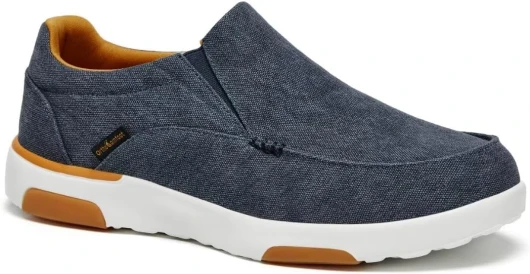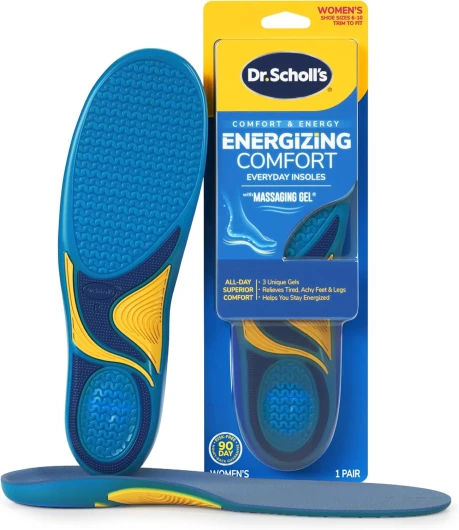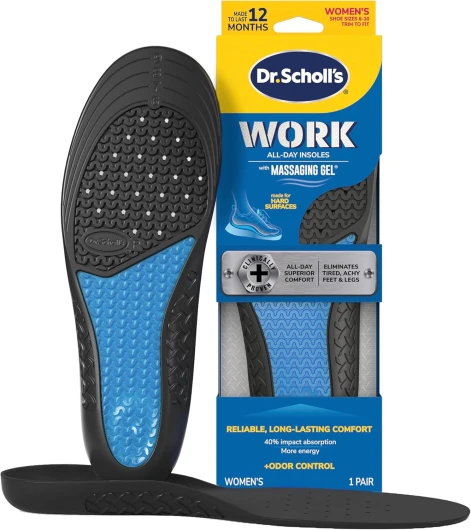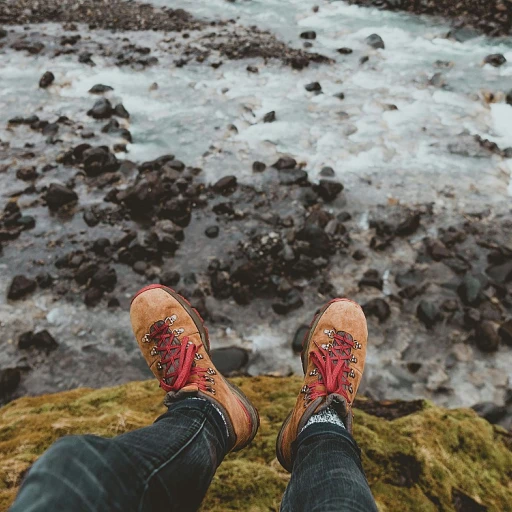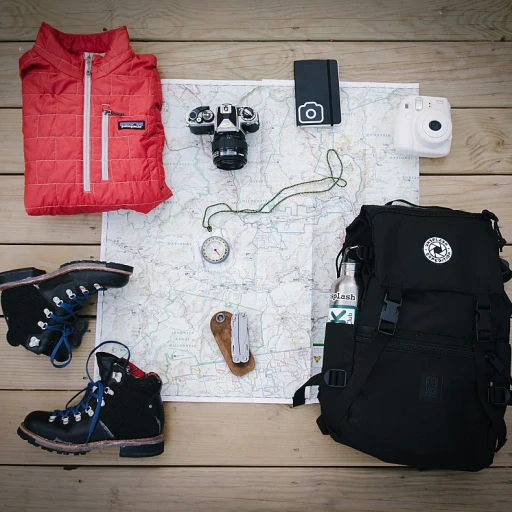
Understanding Morton's Neuroma and Its Impact on Hikers
Deciphering Morton's Neuroma in Outdoor Enthusiasts
Morton's Neuroma is a condition that many hikers and outdoor lovers find perplexing, often manifesting as a painful sensation at the ball of the foot. This condition occurs due to the thickening of nerve tissue, specifically in the forefoot region between the third and fourth toes. As hiking involves substantial footwork, understanding how this nerve irritation impacts your outdoor activities is crucial. Morton's Neuroma symptoms, such as tingling, burning, or numbness in the forefoot, can significantly affect hiking experiences by inducing discomfort with every step. This discomfort often stems from pressure exerted by ill-fitting footwear, which aggravates the condition. Therefore, choosing the right hiking footwear becomes essential in managing these symptoms effectively. For managing Morton's Neuroma, the focus shifts towards alleviating pressure and pain. A critical step involves selecting footwear that offers ample support, particularly in the arch and toe box. Finding shoes that accommodate a broad fit and wide toe box can help distribute pressure more evenly across the forefoot, mitigating pain. Moreover, certain modifications like integrating custom insoles or orthotics can enhance overall foot alignment and reduce nerve stress. Opting for specialized neuroma shoes that prioritize comfort without compromising on functionality can lead to a pain free hiking journey. Considering alternative shoe options, like military boots designed for outdoor ventures, may prove beneficial in some cases. In summary, understanding Morton's Neuroma's impact on your hiking experiences is the foundation for making informed decisions when purchasing hiking boots and optimizing foot comfort.Key Features to Look for in Hiking Boots for Morton's Neuroma
Essential Boot Features to Alleviate Discomfort
When dealing with Morton's Neuroma, choosing the right hiking boots can significantly improve the comfort level while adventuring. The specific features of hiking boots can profoundly influence your experience if you are managing symptoms like nerve irritation and forefoot pressure.
- Wide Toe Box: To accommodate inflammation and reduce pressure on the forefoot, opt for shoes with a wide toe box. This extra space helps prevent the compression often responsible for the worsening of neuroma symptoms.
- Arch Support: Ensuring appropriate toe and arch support may help mitigate nerve irritation. Boots that offer solid arch support tend to enhance foot alignment, offering a pain-free experience.
- Shock Absorption: With each step, shock can transfer to the balls of the feet, worsening the pain associated with Morton's Neuroma. Footwear with effective shock absorption designs is crucial for minimizing this impact.
- Flexible Yet Supportive Soles: A good balance between flexibility and support ensures your feet are cushioned while maintaining stability on various terrains. This combination can help manage the pain and symptoms effectively.
- Soft, Breathable Materials: Prioritizing shoes made from cushioning materials that are gentle on your feet can prevent additional foot pain and pressure while hiking.
To explore how these features play out in specific products, consider checking out women's hunting boots for outdoor adventures that provide insights on versatile options that may help alleviate symptoms.
Top Hiking Boot Brands Recommended for Morton's Neuroma
Choosing the Best Brands for Foot Health
When it comes to selecting hiking boots that cater to the needs of those dealing with Morton's neuroma, there are certain brands that are often recognized for their commitment to comfort and support. These brands focus on creating footwear that helps reduce pressure on the nerve, crucial for managing foot pain effectively.- Brooks: Known for its wide toe box design, Brooks provides ample room for the toes, making it a great choice for individuals with neuroma symptoms. Their footwear offers substantial arch support and insoles that can help improve foot alignment, reducing the pressure on the forefoot.
- New Balance: This brand often incorporates wider options in their line, catering to those who need a broader fit. New Balance offers shoes that prioritize comfort and provide the support necessary to stay pain-free, even during long hikes.
- Altra: With a unique focus on foot-shaped shoes, Altra delivers a fit that mimics the natural shape of the foot. This ensures there is minimal pressure on the ball of the foot, helping alleviate nerve irritation associated with neuroma Morton.
- Hoka One One: Renowned for its cushioned soles, Hoka One One designs shoes that significantly enhance comfort during hikes. The additional cushioning helps absorb the impact on the forefoot, easing the strain on the affected nerve areas.
Custom Orthotics and Insoles: Enhancing Comfort in Hiking Boots
Maximizing Comfort with Custom Orthotics in Hiking Boots
Custom orthotics and insoles can significantly enhance the comfort level for hikers suffering from Morton's neuroma. The primary aim of utilizing these foot aids is to alleviate foot pain by reducing pressure on the nerve irritation that causes the painful symptoms.
Off-the-shelf insoles might offer adequate arch support for some, but for many experiencing foot pain linked to neuroma, custom solutions provide a more tailored fit. This can help relieve pressure on the ball of the foot and improve foot alignment, both of which are crucial for pain-free hiking.
When selecting insoles or orthotics specifically designed for neuroma symptoms, one should consider:
- Arch Support: Proper arch support is essential in neuroma shoes, as it helps distribute weight evenly across the foot.
- Wide Toe Box Design: A wide toe box is crucial for reducing pressure around the toes, which can help with neuroma discomfort.
- Cushioning Material: A cushioned insole helps absorb shock and reduces the impact pressure on the forefoot, enhancing the overall comfort in black or white shoes for long hikes.
Footwear choices can make or break a hiking experience, especially for those dealing with Morton's neuroma. By integrating the right orthotics or insoles, hikers can transform their footwear into the best shoes for their condition, offering the support needed to tread confidently into any terrain.
Tips for Choosing the Right Hiking Boots for Your Needs
Finding the Perfect Fit: Making Informed Decisions
Selecting the right hiking boots when managing Morton's neuroma is crucial to ensure optimal comfort and reduce foot pain. Here are some essential tips to help guide your decision-making process:- Prioritize Sizing: Ensure that the size of the shoe allows for enough space in the toe box to prevent additional pressure on the affected area. A wide toe box is beneficial as it allows your toes to splay naturally, alleviating stress on the ball of the foot and reducing nerve irritation.
- Arch Support is Key: A good arch support system can significantly reduce pressure on your forefoot and promote proper foot alignment. This can help in mitigating neuroma symptoms by distributing weight more evenly across the feet.
- Test for Comfort: Before committing to a purchase, walk around in prospective hiking boots to test their comfort level. Look for models that offer cushioning and soft insoles to further help ease discomfort and support the nerve.
- Select the Right Materials: Opt for breathable materials and construction like leather or mesh, which promote airflow and prevent overheating. Overheated or sweaty feet can exacerbate symptoms, making breathable footwear a much-needed feature.
- Consider Boot Adjustability: Boots with adjustable lacing systems allow for a customized fit, thus providing enhanced comfort and support. This is particularly important for individuals dealing with Morton's neuroma as it allows you to adjust the tension around your forefoot.
- Try Footwear at Different Times of the Day: As feet tend to swell throughout the day, trying on shoes at the end of the day can ensure they will be comfortable at any time. This is especially pertinent for hikers who often spend long hours on their feet.
Real-Life Experiences: Hikers Share Their Stories
Shared Wisdom from the Hiking Community
Real-world experiences serve as invaluable guides, and the hiking community is rich with anecdotes and advice when it comes to managing Morton's neuroma in the backcountry. A common theme among hikers dealing with this condition is the transformative impact of selecting appropriate footwear, as it alleviates foot pain and enhances comfort.
One hiker mentioned that wide toe box shoes were a game-changer, allowing toes room to move and reducing pressure on the nerve. Such footwear, designed with ample space, offers relief by minimizing friction and compression, key factors contributing to nerve irritation and neuroma symptoms.
Another enthusiast emphasized the necessity of insoles specifically engineered to provide arch support and cushion the ball of the foot. These orthotics can effectively realign foot pressure, ensuring a pain-free trek. Many hikers noted that custom insoles enhanced comfort by giving additional support precisely where it's needed.
Support and fit also topped the list for those sharing their insights. Several hikers advised opting for models with adjustable lacing systems. This feature helps in achieving a personalized fit that can dynamically accommodate any foot swelling throughout the day, thus contributing significantly to overall comfort and pressure management.
Black and white hiking boots with supportive features yet stylish designs were popular among women who also contend with the fashion-functionality balance in their footwear choices. One piece of advice often repeated was to avoid high heels or women shoes not intended for hiking, as they can exacerbate neuroma symptoms by placing undue pressure on the forefoot.
These testimonials underscore the importance of thoughtful gear selection, as shared by seasoned hikers with first-hand experiences. It becomes evident that the right pair of hiking boots is an essential tool for reducing discomfort and protecting against aggravating the nerve, allowing all enthusiasts to fully embrace their outdoor adventures.

